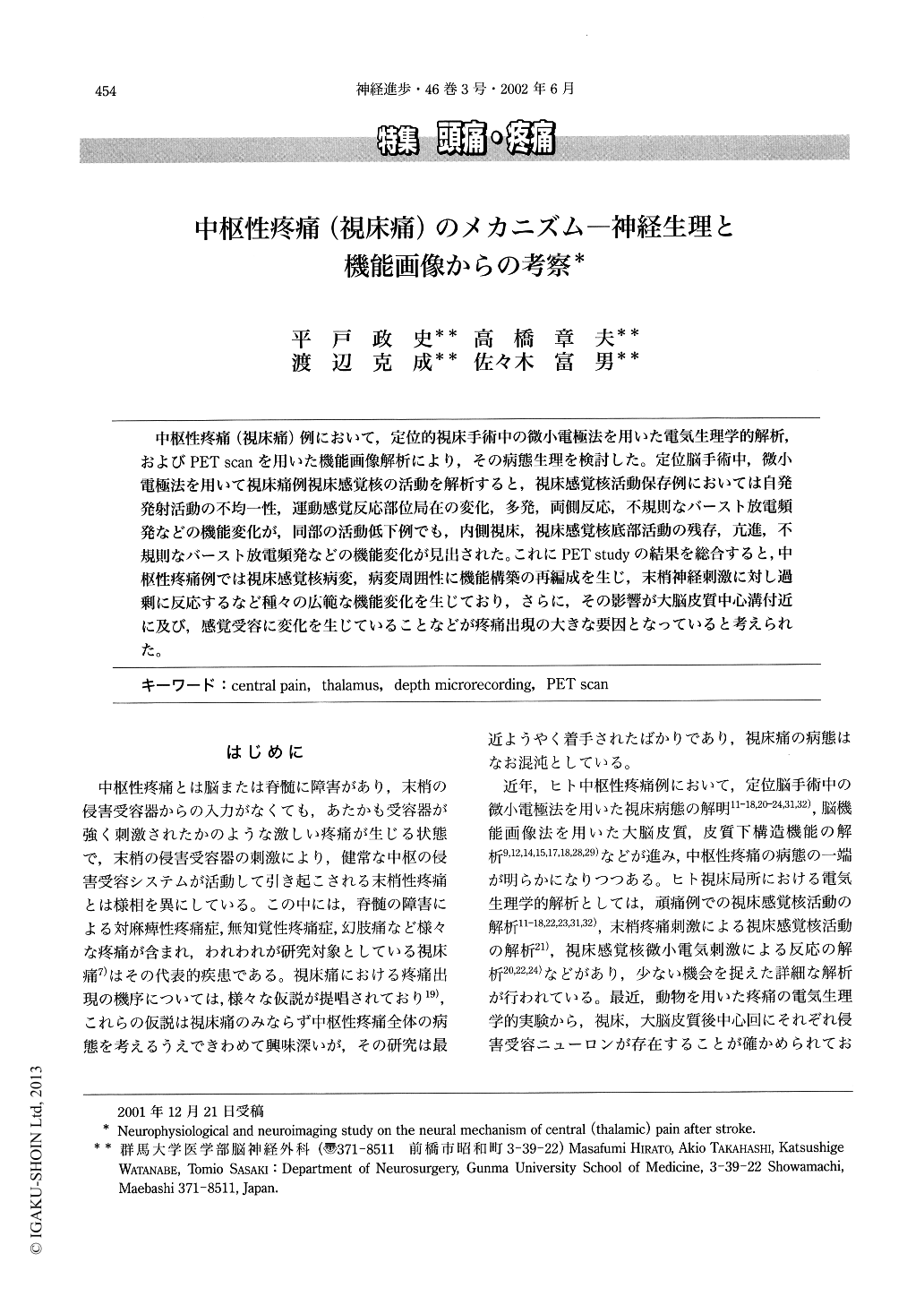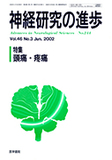Japanese
English
- 有料閲覧
- Abstract 文献概要
- 1ページ目 Look Inside
中枢性疼痛(視床痛)例において,定位的視床手術中の微小電極法を用いた電気生理学的解析,およびPET scanを用いた機能画像解析により,その病態生理を検討した。定位脳手術中,微小電極法を用いて視床痛例視床感覚核の活動を解析すると,視床感覚核活動保存例においては自発発射活動の不均一性,運動感覚反応部位局在の変化,多発,両側反応,不規則なバースト放電頻発などの機能変化が,同部の活動低下例でも,内側視床,視床感覚核底部活動の残存,亢進,不規則なバースト放電頻発などの機能変化が見出された。これにPET studyの結果を総合すると,中枢性疼痛例では視床感覚核病変,病変周囲性に機能構築の再編成を生じ,末梢神経刺激に対し過剰に反応するなど種々の広範な機能変化を生じており,さらに,その影響が大脳皮質中心溝付近に及び,感覚受容に変化を生じていることなどが疼痛出現の大きな要因となっていると考えられた。
Neurophysiological and neuroimaging study were performed in order to ellucidate the neural mechanism of central (thalamic) pain after stroke. In 19 cases with central pain, we carried out stereotactic VIM (Ventralis Intermedius) , VIM-CL (Centralis Lateralis) or VIM-Vcpc (Ventralis caudalis parvo-cellularis) thalamotomy. We analyzed the electrophysiological characteristics of the thalamus in these patients, who were classified into non-thalamic and thalamic lesion groups according to the findings on CT scans. Clinically, we could usually recognize the more deep than the superficial pain in the non-thalamic lesion group.

Copyright © 2002, Igaku-Shoin Ltd. All rights reserved.


